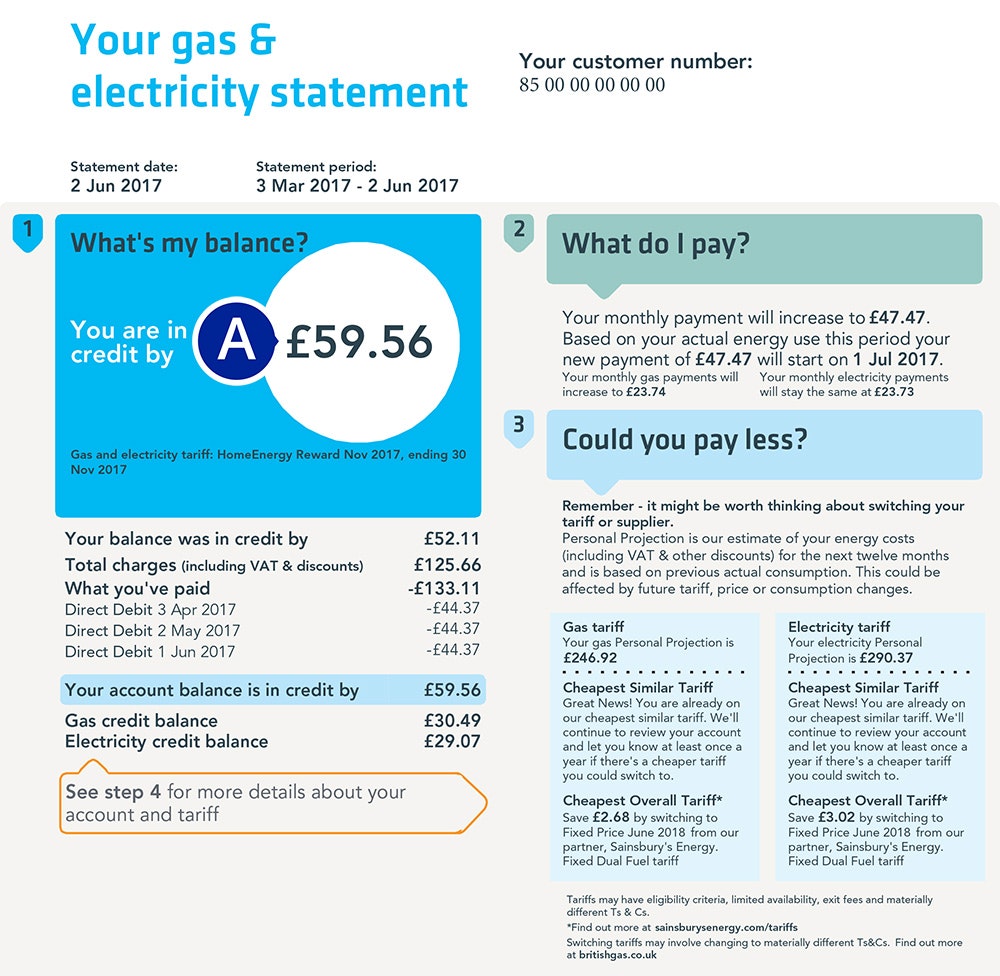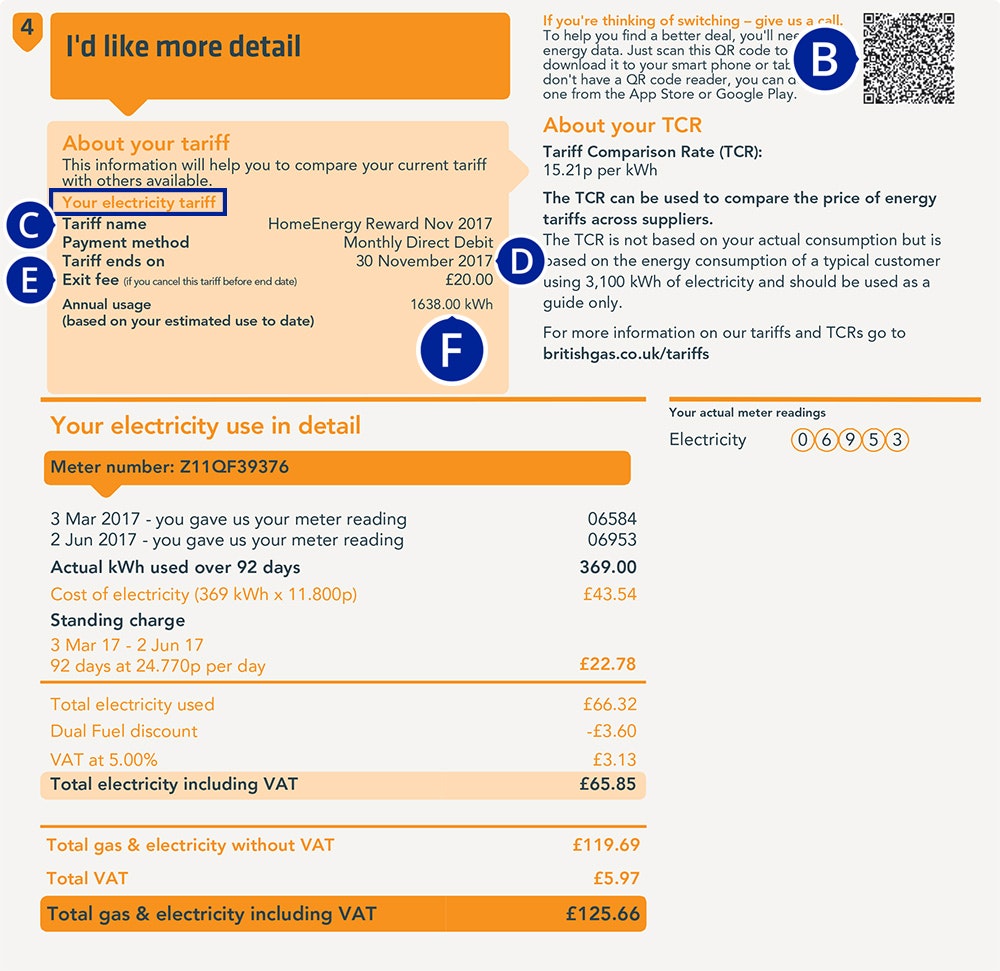How do I
read my British Gas bill?
We’ve taken a sample British Gas energy bill and shown you where you'll
find the key information.
The main info on your British Gas bill
Charges, balance and credit / debit

A: Your balance will inform you if you're in debit or credit to British Gas. Knowing this can be a good indicator of whether or not your direct debit is at the right level to cover your energy usage.
If you're amounting credit during winter months, it's likely you should
be paying a lower direct debit amount. If you're in debit to your supplier in
summer months, you'll accrue an even larger debt as you head into winter when
your usage increases. Your supplier may automatically increase your direct
debit amount in this instance.
Supplying regular meter readings keeps your balance as accurate as
possible.
Plan details and annual usage
This example is for electricity — gas would follow
the same format on a different page

B: This is an example QR code you would find on your bill. Your bill's unique code contains information about your tariff and usage.
C: Your tariff name could
quickly flag whether or not you're on your supplier's often expensive default
tariff (standard variable tariff). British Gas' standard variable tariff is
called "Standard". You'll also need your current tariff's name for a
comparison.
D: This is the date your
current plan ends. After this point you'll be rolled onto a tariff chosen by
your supplier, which could cost you more. You should switch again onto a fixed
plan at this point to avoid overpaying.
E: If your plan has an exit
fee, you may need to pay the stated amount if you switch to another plan before
your current plan ends.
F: This your annual usage in
Kilowatt hours. This is usually estimated based on previous meter readings. The
Energy Team can use this figure to calculate how much you would pay for the
next 12 months on different plans.
Meter details

G: Your electricity supply
number (MPAN) and gas supply number (MPRN) are displayed next to eachother on
dual-fuel bills, or separately if you receive a bill for each fuel. Your MPAN
is the one starting with an S, and the MPRN is simply a string of 10 numbers.
Help me understand my British Gas bill
Here are some common terms you’ll see on your energy bill, and what they
mean:
Fixed Rate — A fixed rate is just that:
it means your rate cannot be changed by your supplier before your plan’s end
date. You can get a fixed rate plan for one, two or three years. Find out more
about fixed rate plans, including how they work
and the current cheapest fixed rate plans.
Variable Rate — The opposite
of fixed rate plans, variable rates are often what supplier’s use for their
standard plans. This means that if the supplier announces a price rise, your
energy costs will go up.
kWh — A kilowatt-hour or kWh is a
name given to a unit of energy, and it is the standard unit across suppliers for
both gas and electricity. One kWh will provide enough energy to power a
100-watt lightbulb for 10 hours.